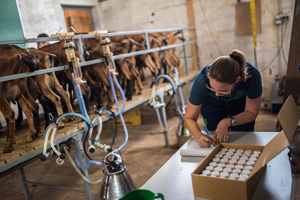Life Sciences - Where Next?
We are all aware of the war for talent; the life sciences sector is no different. How might the industry's decisions regarding location impact that?
Excellent academic institutions continue to be at the heart of any decision around location for life sciences, and it is hard to imagine that changing. To attract that world-class talent however life science hubs, need to offer world-class lab space and more. Designs need to be flexible, so those working at the hubs can enjoy other amenities – from gyms to bars and restaurants in order to create communities which will attract and retain highly skilled talent.
So, first to the golden triangle of Cambridge-Oxford-London, which has driven the UK life sciences sector. Life science campuses in Cambridge and Oxford, within easy reach of those cities, are focused on generating a sense of community through its amenities.
Do labs in London lend themselves more easily to that though? The growth in London has been very newsworthy this year. What with the March announcement of a joint venture between Kadans Science Partners and Canary Wharf Group, to develop a 23-storey building with the largest commercial wet lab enabled life science building in Europe. Quickly followed by the news of the £350M Snowfields Quarter 20 storey scheme, for which Oxford Properties and Reef Group are the preferred development partner. As discussed in our recent article about London’s space in the Life Sciences sector, our capital keeps attracting a large pool of talented individuals.
Of course, the golden triangle should not eclipse development further north. The government’s Life Sciences Opportunity Zones scheme shines a spotlight on locations with the potential to play a role in the industry’s growth; three Zones are outside the golden triangle and include Birmingham and Leeds.
In Birmingham, a joint venture between Bruntwood SchiTech and the University of Birmingham sees the development of the Birmingham Health Innovation Campus, which will be dedicated to health and life sciences, the first of its kind in the region. It is due to open in 2023 and will offer not only “high quality laboratory, office, incubation and innovation facilities” but also “an integrated, physically connected critical cluster of patient-centred health excellence...creating opportunities for transformative collaboration between businesses, the University and NHS partners.”
In Leeds, LabCorp is developing Drapers’ Yard as the future 85,000 sq. ft HQ and new clinical research for Phase 1 studies which will also open early next year. Almost a year on, Forbes magazine’s conclusion on areas outside of London still feels apposite. It will be interesting to see how investors capitalise on opportunities beyond the golden triangle in the coming years.
“there’s certainly more that could be done...in terms of helping unlock investment, easing access to skills and improving transport and social infrastructure that could really turbo-charge their potential.







